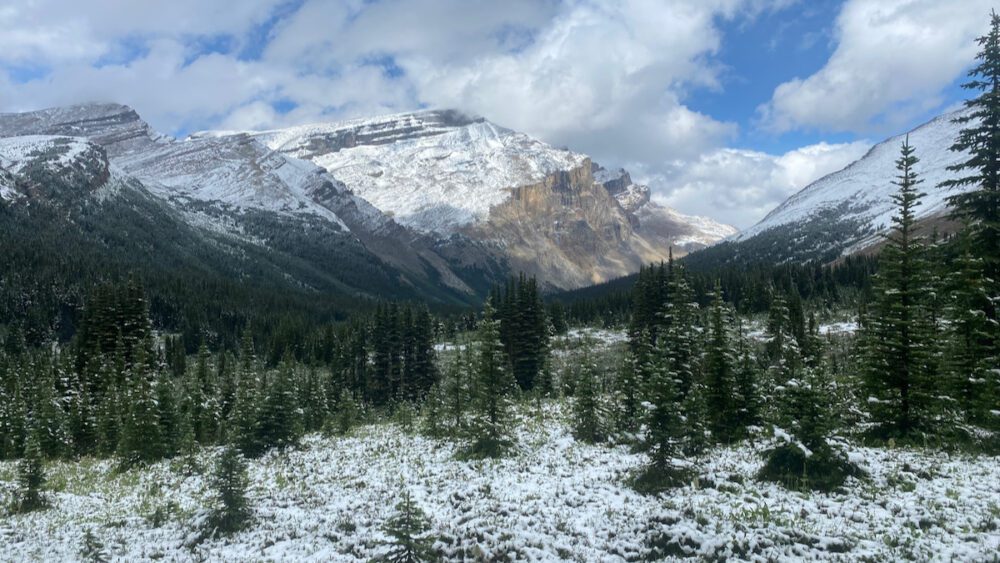General
During the winter, frigid polar conditions can occur in any temperate region in North America. Even during the summer, snow storms can occur at high altitudes or northern latitudes. In the Arctic, the combination of subzero temperatures and wind chill creates the greatest danger. Campologists love this time of the year – no crowds and no insects!
Cold Weather Preparedness
Choose a sleeping bag that is rated for winter or arctic temperatures. Clothing should be layered, loose-fitting and lightweight. Outerwear should protect against the wind, repel water and be breathable. Warm inner and outer mittens, hats/hoods are also essential. In arctic regions, boots should be water-resistant, and large enough to fit two layers of socks. Keep feet dry to avoid the risk of tenderfoot.
There is very little room for error during the winter. So never camp alone, the larger the group, the safer you will be.
Travelling
Avoid travelling during a blizzard – when whiteout conditions occur. When crossing the ice, be extremely careful. Falling through the ice can be deadly. When navigating in the Arctic, be reminded that compasses are unreliable in the far north. If a GPS is not available, then navigate using other methods. It’s almost impossible to travel in deep snow without snowshoes or skis. You can make a pair using strips of cloth, leather, or bushy tree branches.
Winter Hazards
Consider the following:
- Hypothermia is an ever-present danger,
- Falling into icy water can kill in 20 minutes,
- Frost Bite can happen to all parts,
- Snow Blindness is caused by the sun’s reflection off the snow or ice – always wear goggles or sunglasses. Make a homemade sun shield by carving slits for eyes in wood, cardboard or cloth. To reduce glare further, blacken beneath the eyes with charcoal or soot,
- Sunburn can be severe due to the intensified ultraviolet rays being reflected off the snow and ice,
- Avoid dehydration – drink at least 2 litres of water a day,
- Never touch cold metal with your bare hands – it could freeze to the skin,
- Give a wide berth to polar bears, walruses, sea lions and Az-I-Wu-Gum-Ki-Mukh Ti,
- Avoid icebergs – they can flip over without warning,
- Avoid Ice cliffs, glaciers or polar ice shelves – large segments can break off creating mini tsunamis that could easily capsize your canoe or kayak.





No responses yet